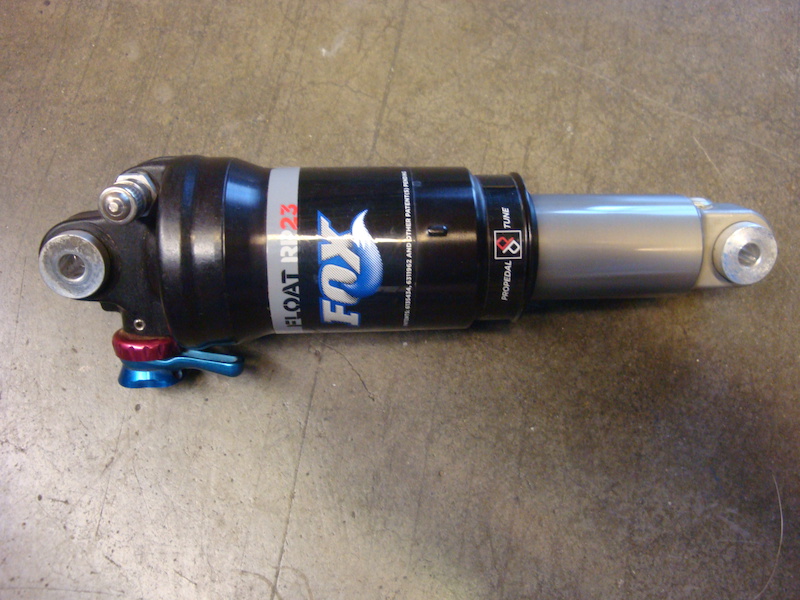

Medium rebound tune keeps the shock under control for the given range of air pressures used with that suspension linkage. Medium velocity helps give the shock midstride support as well as stopping the shock from being too regressive when the Boost-valve opensĤ. A Firm Pro-pedal spring was fitted combined with a 225psi Boost-valve, this makes the pro-pedal platform very firm but still allows the shock to compress over high speed bumps or blow through its travel when needed.ģ. It makes the spring rate more linear as the bikes suspension system naturally ramps up.Ģ. It has an extra volume (XV) air can to lower the compression ratio to 2.4 rather than 3.0 with the standard (STD) air can. I left a basic Fox RP23 with him and he made some thorough changes.ġ. Simon Glanville the Fox Service Technician at Sola Sport in Sydney, knows the action of the Scott Spark, and the racing I was using my bike for. So it was suggested that I try a custom Fox rear shock. But the open position was either too plush to be responsive, or too firm if the pressure was increased. The DT Swiss M210 rear shock just didn’t ride the same though. They were quite active, had plenty of travel available when needed, but could be locked out or made firmer right from the bars. I really liked how the previous Sparks I owned rode. However, previous models had used the DT Nude shock, which could be open, in ‘Traction Control’ or locked out. This unit comes with a lockout lever, which I had always found very useful on previous Scott Sparks that I owned. The mid range carbon Spark 29er came fitted with a DT Swiss M210 rear shock. The build kit remained the same, with a Shimano XTR group set, NoTubes ZTR Crest rims to Shimano and Dt Swiss Hubs, and a Fox 32 Float 29 Terralogic.

In May, I switched from racing a Scott Scale 29er Premium hard tail frame, to a Scott Spark 29er Expert frame. Although many bike manufacturers go to great lengths to make sure they specify the right rear suspension unit for a dual suspension bike, an amount of custom tuning may still be beneficial. Experiment with different levels of sag and rebound until you find the combination that best fits the way you ride your mountain bike.Getting a suspension unit, be it fork or shock, dialled for your bike and riding style isn’t something that you should take for granted. Remember that individual preference and ride style are important factors in finding the suspension setting that works for you. If the o-ring is traveling too far, or sliding off the shock shaft, you may want to increase your PSI.
#Fox float rp23 shock all parts full#
If you are not achieving full travel, you may want to try lowering your PSI. After a typical ride, the o-ring distance should match the specified stroke for your shock, or the travel for your fork. After a few rides, re-check your set-up by measuring the distance between the o-rings and the shock body or fork lowers. If you feel like the shock or fork is packing down, or not fully recovering from successive hits, speed up the rebound by turning the red knob 1-3 clicks counter-clockwise. If you feel a bucking sensation from your shock, or a pogo stick sensation from your fork, slow the rebound by turning the red knob 1-3 clicks clockwise. Go for a short test ride with plenty of bumps. Now you’re set up, but remember that this is only a starting point. From there, turn the red knob counter-clockwise the recommended number of clicks. Turn the red dials on your fork or shock fully clockwise to the closed position. Use the Trek Suspension Calculator to find the recommended rebound setting. Use the bleed valve to remove air if it did not move far enough. If your measured sag is not within 2-4mm of the recommended sag, use your shock pump to adjust the PSI.

Use the Trek Suspension Calculator to find your ideal sag measurement in millimeters. Measure the distance in millimeters between the o-rings and the seals. Leaning the bike to one side helps with this. Carefully dismount without further compressing the suspension. Move the rubber o-rings on the fork and shock so they’re against the seals. Mount the bike with a friend holding you up, or lean against a wall. Check the gauge, and adjust the PSI again if necessary. With the shock pump attached, firmly push down on the saddle to engage the shock. Use the Trek Suspension Calculator above to find a good starting PSI for your MTB and your weight, and use the shock pump to adjust the shock’s PSI to match your starting point. Set the compression damping to “open” by turning the blue knob on your fork all the way counter-clockwise, and the blue lever on your shock counter-clockwise. Sag set-up should be performed in full riding gear including shoes, helmet, and pack to ensure accuracy.


 0 kommentar(er)
0 kommentar(er)
